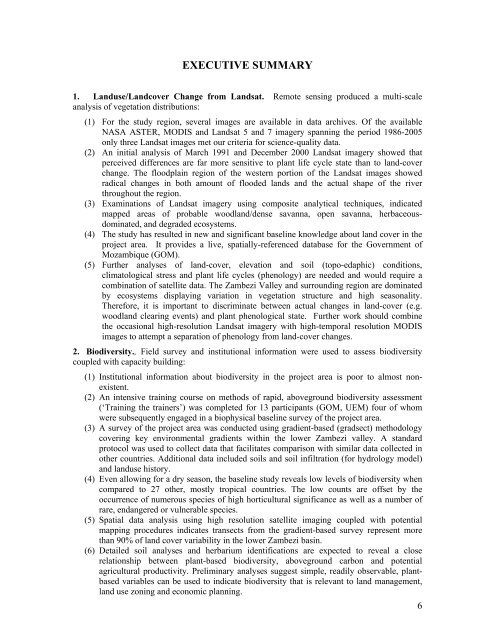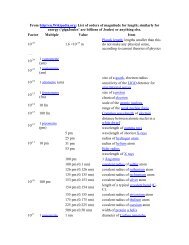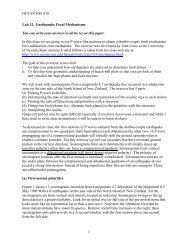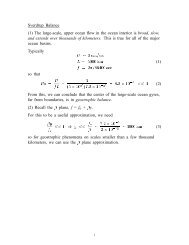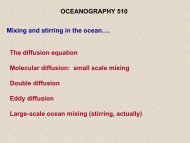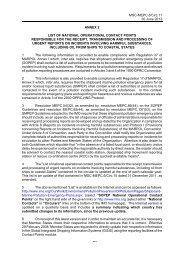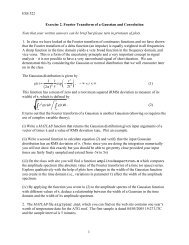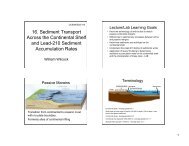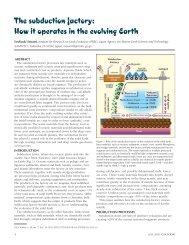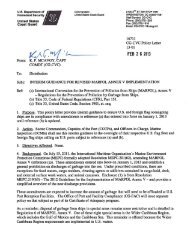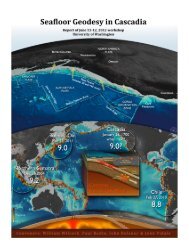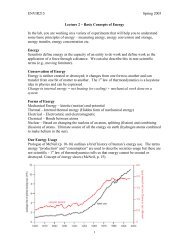LOWER ZAMBEZI RIVER BASIN BASELINE DATA ON LANDUSE ...
LOWER ZAMBEZI RIVER BASIN BASELINE DATA ON LANDUSE ...
LOWER ZAMBEZI RIVER BASIN BASELINE DATA ON LANDUSE ...
Create successful ePaper yourself
Turn your PDF publications into a flip-book with our unique Google optimized e-Paper software.
EXECUTIVE SUMMARY1. Landuse/Landcover Change from Landsat. Remote sensing produced a multi-scaleanalysis of vegetation distributions:(1) For the study region, several images are available in data archives. Of the availableNASA ASTER, MODIS and Landsat 5 and 7 imagery spanning the period 1986-2005only three Landsat images met our criteria for science-quality data.(2) An initial analysis of March 1991 and December 2000 Landsat imagery showed thatperceived differences are far more sensitive to plant life cycle state than to land-coverchange. The floodplain region of the western portion of the Landsat images showedradical changes in both amount of flooded lands and the actual shape of the riverthroughout the region.(3) Examinations of Landsat imagery using composite analytical techniques, indicatedmapped areas of probable woodland/dense savanna, open savanna, herbaceousdominated,and degraded ecosystems.(4) The study has resulted in new and significant baseline knowledge about land cover in theproject area. It provides a live, spatially-referenced database for the Government ofMozambique (GOM).(5) Further analyses of land-cover, elevation and soil (topo-edaphic) conditions,climatological stress and plant life cycles (phenology) are needed and would require acombination of satellite data. The Zambezi Valley and surrounding region are dominatedby ecosystems displaying variation in vegetation structure and high seasonality.Therefore, it is important to discriminate between actual changes in land-cover (e.g.woodland clearing events) and plant phenological state. Further work should combinethe occasional high-resolution Landsat imagery with high-temporal resolution MODISimages to attempt a separation of phenology from land-cover changes.2. Biodiversity., Field survey and institutional information were used to assess biodiversitycoupled with capacity building:(1) Institutional information about biodiversity in the project area is poor to almost nonexistent.(2) An intensive training course on methods of rapid, aboveground biodiversity assessment(‘Training the trainers’) was completed for 13 participants (GOM, UEM) four of whomwere subsequently engaged in a biophysical baseline survey of the project area.(3) A survey of the project area was conducted using gradient-based (gradsect) methodologycovering key environmental gradients within the lower Zambezi valley. A standardprotocol was used to collect data that facilitates comparison with similar data collected inother countries. Additional data included soils and soil infiltration (for hydrology model)and landuse history.(4) Even allowing for a dry season, the baseline study reveals low levels of biodiversity whencompared to 27 other, mostly tropical countries. The low counts are offset by theoccurrence of numerous species of high horticultural significance as well as a number ofrare, endangered or vulnerable species.(5) Spatial data analysis using high resolution satellite imaging coupled with potentialmapping procedures indicates transects from the gradient-based survey represent morethan 90% of land cover variability in the lower Zambezi basin.(6) Detailed soil analyses and herbarium identifications are expected to reveal a closerelationship between plant-based biodiversity, aboveground carbon and potentialagricultural productivity. Preliminary analyses suggest simple, readily observable, plantbasedvariables can be used to indicate biodiversity that is relevant to land management,land use zoning and economic planning.6


